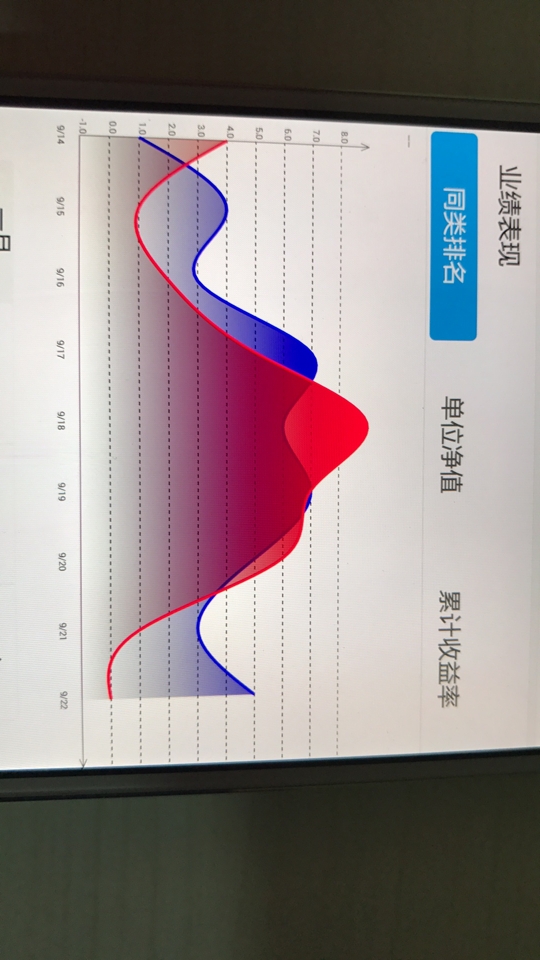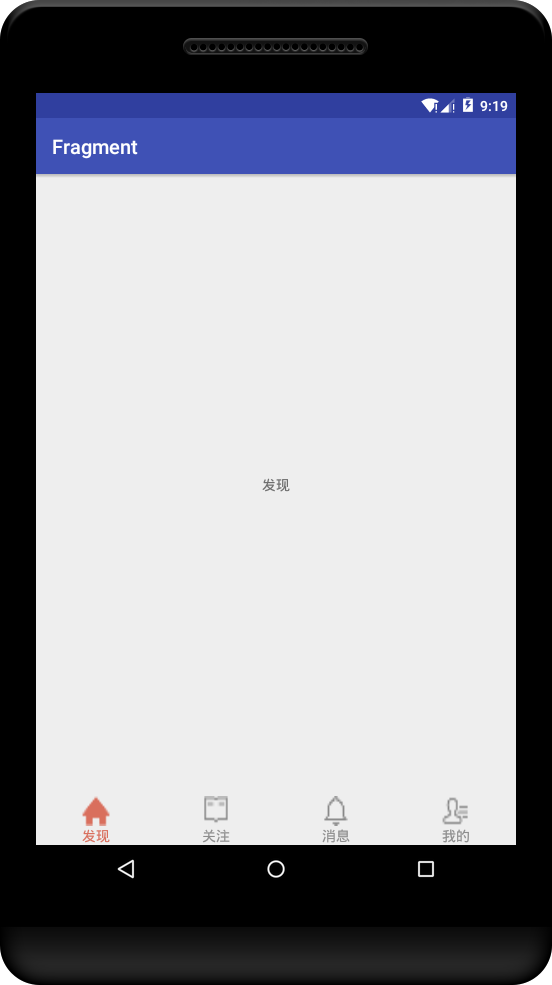編輯:關於Android編程
繪制曲線類:

public class BaseFundChartView extends View {
Paint linePaint;
Paint textPaint;
Paint xyChartPaint;
Paint chartLinePaint;
Paint chartJianbianPaint;
List points;
public BaseFundChartView(Context context, AttributeSet attrs, int defStyleAttr) {
super(context, attrs, defStyleAttr);
init();
}
public BaseFundChartView(Context context) {
this(context, null);
}
public BaseFundChartView(Context context, AttributeSet attrs) {
this(context, attrs, 0);
}
PathEffect effect;
Path path;
private void init() {
linePaint = new Paint();
textPaint = new Paint();
xyChartPaint = new Paint();
chartLinePaint = new Paint();
chartJianbianPaint = new Paint();
//設置繪制模式為-虛線作為背景線。
effect = new DashPathEffect(new float[] { 6, 6, 6, 6, 6}, 2);
//背景虛線路徑.
path = new Path();
//只是繪制的XY軸
linePaint.setStyle(Paint.Style.STROKE);
// linePaint.setStrokeWidth((float) 0.7);
linePaint.setStrokeWidth((float) 1.0); //設置線寬
linePaint.setColor(Color.BLACK);
linePaint.setAntiAlias(true);// 鋸齒不顯示
//XY刻度上的字
textPaint.setStyle(Paint.Style.FILL);// 設置非填充
textPaint.setStrokeWidth(1);// 筆寬5像素
textPaint.setColor(Color.BLACK);// 設置為藍筆
textPaint.setAntiAlias(true);// 鋸齒不顯示
textPaint.setTextAlign(Paint.Align.CENTER);
textPaint.setTextSize(15);
//繪制XY軸上的字:Y開關狀態、X時間
xyChartPaint.setStyle(Paint.Style.FILL);
xyChartPaint.setStrokeWidth(1);
xyChartPaint.setColor(Color.BLUE);
xyChartPaint.setAntiAlias(true);
xyChartPaint.setTextAlign(Paint.Align.CENTER);
xyChartPaint.setTextSize(18);
//繪制的折線
chartLinePaint.setStyle(Paint.Style.STROKE);
chartLinePaint.setStrokeWidth(5);
chartLinePaint.setColor(Color.BLUE);
chartLinePaint.setAntiAlias(true);
//繪制的折線
chartJianbianPaint.setStyle(Paint.Style.FILL);
chartJianbianPaint.setStrokeWidth(5);
//chartJianbianPaint.setColor(Color.YELLOW);
chartJianbianPaint.setAntiAlias(true);
}
/**
* 重要參數,兩點之間分為幾段描畫,數字愈大分段越多,描畫的曲線就越精細.
*/
private static final int STEPS = 12;
float gridX,gridY,xSpace = 0,ySpace = 0,spaceYT = 0,yStart=0;
List dateX = null;
List dateY = null;
List> data = null;
List colors = null;
public void setColors(List colors) {
this.colors = colors;
}
public List getDateY() {
return dateY;
}
public void setDateY(List dateY) {
this.dateY = dateY;
}
public List> getData() {
return data;
}
public void setData(List> data) {
this.data = data;
}
public List getDateX() {
return dateX;
}
public void setDateX(List dateX) {
this.dateX = dateX;
}
@Override
protected void onDraw(Canvas canvas) {
super.onDraw(canvas);
//基准點。
gridX = 40;
gridY = getHeight() - 50;
//XY間隔。
if(dateX!=null&&dateX.size()>0){
xSpace = (getWidth() - gridX)/dateX.size();
}
if(dateY!=null&&dateY.size()>0){
ySpace = (gridY - 70)/dateY.size();
yStart = dateY.get(0);
if(dateY.size()>2){
spaceYT = Math.abs(dateY.get(1)-dateY.get(0));
}
}
UIUtils.log("rewqfdesa",gridY,"fdsafdsa");
//畫Y軸(帶箭頭)。
canvas.drawLine(gridX, gridY - 20 - 10, gridX, 30 + 10, linePaint);
canvas.drawLine(gridX, 30 + 10, gridX - 6, 30 + 14 + 10, linePaint);//Y軸箭頭。
canvas.drawLine(gridX, 30 + 10, gridX + 6, 30 + 14 + 10, linePaint);
//畫Y軸名字。
//由於是豎直顯示的,先以原點順時針旋轉90度後為新的坐標系
//canvas.rotate(-90);
//當xyChartPaint的setTextAlign()設置為center時第二、三個參數代表這四個字中點所在的xy坐標
//canvas.drawText("開關狀態", -((float) (getHeight() - 60) - 15 - 5 - 1 / ((float) 1.6 * 1) * (getHeight() - 60) / 2), gridX - 15, xyChartPaint);
//繪制Y軸坐標
//canvas.rotate(90); //改變了坐標系還要再改過來
float y = 0;
//畫X軸。
y = gridY - 20;
canvas.drawLine(gridX, y - 10, getWidth(), y - 10, linePaint);//X軸.
canvas.drawLine(getWidth(), y - 10, getWidth() - 14, y - 6 - 10, linePaint);//X軸箭頭。
canvas.drawLine(getWidth(), y - 10, getWidth() - 14, y + 6 - 10, linePaint);
//繪制X刻度坐標。
float x = 0;
if(dateX!=null){
for (int n = 0; n < dateX.size(); n++) {
//取X刻度坐標.
x = gridX + (n) * xSpace;//在原點(0,0)處也畫刻度(不畫的話就是n+1),向右移動一個跨度。
//畫X軸具體刻度值。
if (dateX.get(n) != null) {
//canvas.drawLine(x, gridY - 30, x, gridY - 18, linePaint);//短X刻度。
canvas.drawText(dateX.get(n), x, gridY + 5, textPaint);//X具體刻度值。
}
}
}
float my = 0;
if(dateY!=null){
for(int n=0;n0){
float lastPointX = 0; //前一個點
float lastPointY = 0;
float currentPointX = 0;//當前點
float currentPointY = 0;
for(int n=0;n da = data.get(n);
List da_x = new ArrayList<>();
List da_y = new ArrayList<>();
/**
* 曲線路勁
*/
Path curvePath = new Path();
/**
* 漸變色路徑
*/
Path jianBianPath = new Path();
for(int m=0;m0){
// canvas.drawLine(lastPointX, lastPointY, currentPointX, currentPointY, chartLinePaint);
// }
// lastPointX = currentPointX;
// lastPointY = currentPointY;
}
List calculate_y = calculate(da_y);
List calculate_x = calculate(da_x);
curvePath.moveTo(calculate_x.get(0).eval(0), calculate_y.get(0).eval(0));
jianBianPath.moveTo(gridX,gridY - 20 - 10);
jianBianPath.lineTo(calculate_x.get(0).eval(0), calculate_y.get(0).eval(0));
chartLinePaint.setColor(colors.get(n));
float lastx = 0;
for (int i = 0; i < calculate_x.size(); i++) {
for (int j = 1; j <= STEPS; j++) {
float u = j / (float) STEPS;
curvePath.lineTo(calculate_x.get(i).eval(u), calculate_y.get(i)
.eval(u));
jianBianPath.lineTo(calculate_x.get(i).eval(u), calculate_y.get(i)
.eval(u));
lastx = calculate_x.get(i).eval(u);
}
}
jianBianPath.lineTo(lastx,gridY - 20 - 10);
canvas.drawPath(curvePath, chartLinePaint);
Shader mShader = new LinearGradient(0,30 + 10,0,gridY - 20 - 10,new int[] {colors.get(n),Color.TRANSPARENT},null,Shader.TileMode.REPEAT);
//新建一個線性漸變,前兩個參數是漸變開始的點坐標,第三四個參數是漸變結束的點的坐標。連接這2個點就拉出一條漸變線了,玩過PS的都懂。然後那個數組是漸變的顏色。下一個參數是漸變顏色的分布,如果為空,每個顏色就是均勻分布的。最後是模式,這裡設置的是循環漸變
chartJianbianPaint.setShader(mShader);
canvas.drawPath(jianBianPath, chartJianbianPaint);
}
}
// /**
// * 畫點.
// *
// * @param canvas
// */
// private void drawPoints(Canvas canvas) {
// for (int i = 0; i < points.size(); i++) {
// Point p = points.get(i);
// canvas.drawCircle(p.x, p.y, 5, paint);
// }
// }
/**
* 計算曲線.
*
* @param x
* @return
*/
private List calculate(List x) {
int n = x.size() - 1;
float[] gamma = new float[n + 1];
float[] delta = new float[n + 1];
float[] D = new float[n + 1];
int i;
/*
* We solve the equation [2 1 ] [D[0]] [3(x[1] - x[0]) ] |1 4 1 | |D[1]|
* |3(x[2] - x[0]) | | 1 4 1 | | . | = | . | | ..... | | . | | . | | 1 4
* 1| | . | |3(x[n] - x[n-2])| [ 1 2] [D[n]] [3(x[n] - x[n-1])]
*
* by using row operations to convert the matrix to upper triangular and
* then back sustitution. The D[i] are the derivatives at the knots.
*/
gamma[0] = 1.0f / 2.0f;
for (i = 1; i < n; i++) {
gamma[i] = 1 / (4 - gamma[i - 1]);
}
gamma[n] = 1 / (2 - gamma[n - 1]);
delta[0] = 3 * (x.get(1) - x.get(0)) * gamma[0];
for (i = 1; i < n; i++) {
delta[i] = (3 * (x.get(i + 1) - x.get(i - 1)) - delta[i - 1])
* gamma[i];
}
delta[n] = (3 * (x.get(n) - x.get(n - 1)) - delta[n - 1]) * gamma[n];
D[n] = delta[n];
for (i = n - 1; i >= 0; i--) {
D[i] = delta[i] - gamma[i] * D[i + 1];
}
/* now compute the coefficients of the cubics */
List cubics = new LinkedList();
for (i = 0; i < n; i++) {
Cubic c = new Cubic(x.get(i), D[i], 3 * (x.get(i + 1) - x.get(i))
- 2 * D[i] - D[i + 1], 2 * (x.get(i) - x.get(i + 1)) + D[i]
+ D[i + 1]);
cubics.add(c);
}
return cubics;
}
class Cubic{
float a,b,c,d; /* a + b*u + c*u^2 +d*u^3 */
public Cubic(float a, float b, float c, float d){
this.a = a;
this.b = b;
this.c = c;
this.d = d;
}
/** evaluate cubic */
public float eval(float u) {
return (((d*u) + c)*u + b)*u + a;
}
}
}
 Android自定義控件系列五:自定義絢麗水波紋效果
Android自定義控件系列五:自定義絢麗水波紋效果
今天我們來利用Android自定義控件實現一個比較有趣的效果:滑動水波紋。先來看看最終效果圖: 圖一 效果還是很
 Android studio出現Error:Unable to tunnel through proxy. Proxy returns HTTP/1.1 400 Bad Reques的解決辦法
Android studio出現Error:Unable to tunnel through proxy. Proxy returns HTTP/1.1 400 Bad Reques的解決辦法
最近更新了一下Android Studio,在導入新項目之後出現Error:Unable to tunnel through proxy. Proxy returns &
 Android開發之微信底部菜單欄實現的幾種方法匯總
Android開發之微信底部菜單欄實現的幾種方法匯總
實現方式實現的方式有很多種 這裡總結最常見的幾種方式,以後再添加其他的。viewPager + RadioGroupviewPager + FragmentT
 Android實習札記(5)---Fragment之底部導航欄的實現
Android實習札記(5)---Fragment之底部導航欄的實現
在Part 4我們回顧了一下Fragment的基本概念,在本節中我們就來學習Fragment應用的簡單例子吧! 就是使用Fragment來實現